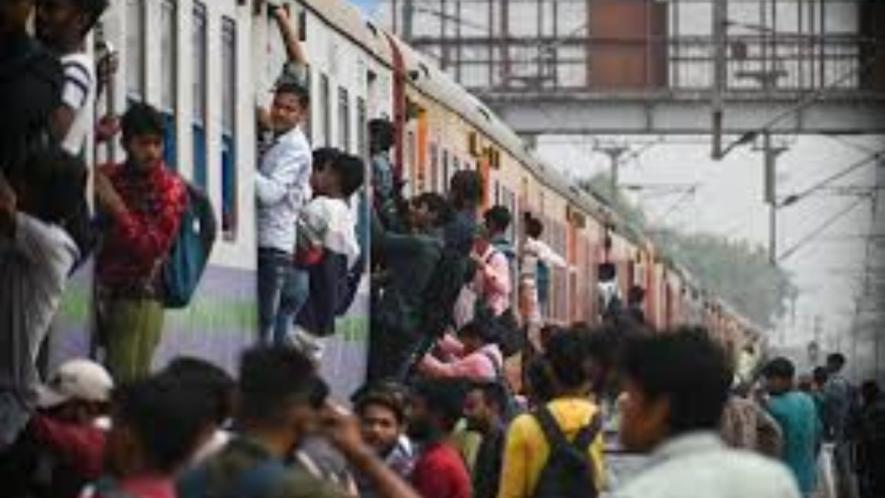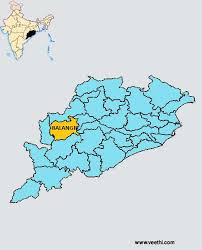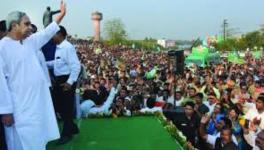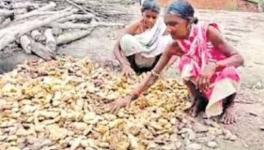Odisha: Is Task Force to Check Distress Migration in Bolangir a Gold Filling to Hide Decay?

The biggest scar on the face of Western Odisha has remained the pain of migration of villagers from several districts, especially from Bolangir district, which remains the focal point of the rot.
It has become a cyclic hazard with governments after governments having failed to put a stop to this distress, regardless of the heartrending conditions that force migrants (both legally and illegally) to go to other states in search of livelihood.
Starting from thousands to now over lakhs of people from Odisha make a beeline to other states, such as Andhra Pradesh and Tamil Nadu, where they are mostly seen engaged in brick kilns or construction sites.
In October 2024, the Odisha government formed a 20-member task force to address the issue of distress migration from the state. The task force is led by Deputy Chief Minister and Agriculture and Farmers' Empowerment Minister KV Singh Deo.
“According to experts with an eye on this trend, over three to five lakh labourers migrate to different states from Odisha every year”, B P Sharma, an advocate who has been pioneering the fight against distress migration from Bolangir, told this writer.
Lack of employment in local areas and agricultural activity coming to a halt for over six months of the year are cited as reasons for this. Sadly, most of those who migrate are landless and solely depend on daily wage as labourers, which shatters their social and economic backbone, thus forcing them to fall victim to labour contract agents who exploit their helplessness and often turn them into bonded labour (or bandhua mazdoors).
There are many loopholes that have perpetually evaded the mechanism set by the government before migration.
For example, under the RECS (Regulation of Employment and Conditions of Services) Act 1979, many persons leave without any registration and are subjected to untold hardship for various reasons.
More often than not, such sufferings are of sub-human nature and often there are casualties, too.
Such migrants are taken out illegally by labour contractors, and in many cases such practices are said to be going on in connivance with district-level officials. Checking this would remain a huge problem for the said task force, say experts.
Labour migration in Odisha is a significant part of rural livelihood, and is also a big reason for a number of problems being faced by migrant workers and their families.
As per a report by Disha Foundation, which works among migrant labour, the number of such labourers from the state migrating to other regions of the country is steadily rising.
“As per the report, 87,000 of seasonal labourers from Odisha migrated to the other states in 2008 which rose to 1.05 lakh in 2012, 1.2 lakh in 2013, further increased to 1.35 lakh in 2014 and 1.45 lakh”, says the report, which does not have the latest figures.
Sadly, since the past few decades, distress labour migration from Western Odisha has served as a survival mechanism for impoverished households.
Extremely under-developed areas of the KBK (Koraput, Bolangir and Kalahandi) region, characterised by uneven development, poverty concentration and ecological features, together with the socio-political conditions, are significant sources for distress migration.
Leave alone any counselling mechanism for such families and workers, even frequent coverage of their distress in the media, a thorough investigation of their plight and the overall impact of widespread distress labour migration is noticeably lacking.
The Disha study also sheds light on the impact of MGNREGA (the rural job guarantee programme) in regulating the distress labour migration. Most of such pre-emptive measures rarely trickle down to the most impoverished lot in rural areas.
After the harvesting seasons, there is no scope for any labour- intensive activities in these areas, where no industrial or any manufacturing activity has taken place since decades.

In developing regions, distress seasonal labour migration has been a means for livelihood, but in drought-prone pockets, such as Bolangir and Kalahandi, this (migration) is one of the major alternatives to diversify into non-farm activities.
Besides, “indebtedness, landlessness, lack of livelihood options coupled with the ineffective public policies for employment and livelihood creation in the place of origin have contributed to a very high magnitude of distress seasonal migration among the rural poor over the last few decades”, said Sharma.
Dealing with the distress of seasonal migrants from the drought- prone regions of Western Odisha with specific focus on the backward lot, in the KBK region, Sharma noted that 18–31% of households had at least one person who had migrated for work outside Odisha. Less than 20% of this was seasonal migration for less than six months, which means that a vast majority of persons were at their work locations for longer than six months at a time. This trend points to the financial gains that migration has brought in. But this reality ignores human factors, such as how they leave, where they stay, if their hirers ensure basic living conditions, such as health and hygiene.
“Seasonal labour migration has turned into a common source of income for the poor in rural areas in Bolangir district. Most of the people who migrate belong to the most vulnerable groups. They possess very little land or no land and are without any stable employment in their local area” said Vinod Sharma, an advocate in Bolangir.
“They engage themselves in brick kilns of Andhra Pradesh. The vulnerable community, particularly tribals and the lower caste people, are honest, laborious and work over time with low wages without getting agitated. Therefore, they are preferred by the contractors,” Santosh Singh Saluja, former MLA of Kantabanji, told this wrtiter.
There is another ground reality -- the amount such migrant labourers earn in six months is not sufficient for the next six months in a year. In order to take care of the rest of the six months, because they don’t have any savings, they are forced to borrow from contractors or from money lenders.
In order to repay the debt, they have to migrate again. This process becomes more or less cyclic.
Most of the labour contractors succeed in taking migrants out of the state without them being registered under the RECS Act 1979 to avoid any legal implications and official formalities.
So, in a nutshell, creation of job opportunities through non-farming activities could be a palliative to ease the pain and distress of the growing army of migrant labour, but it seems a far cry.
The writer is a freelancer based in Odisha.
Get the latest reports & analysis with people's perspective on Protests, movements & deep analytical videos, discussions of the current affairs in your Telegram app. Subscribe to NewsClick's Telegram channel & get Real-Time updates on stories, as they get published on our website.
























